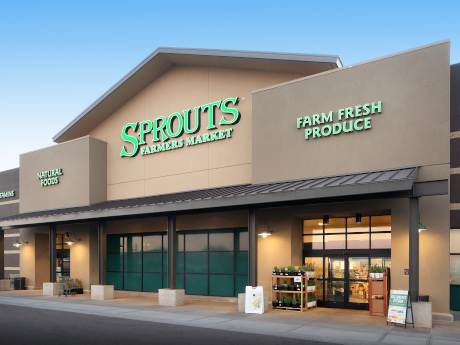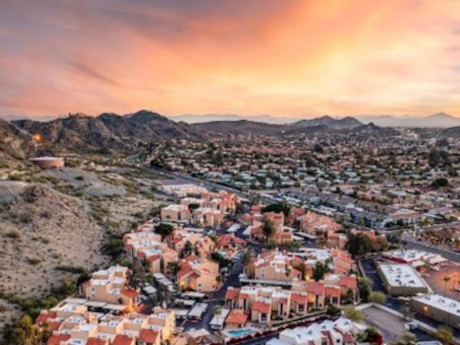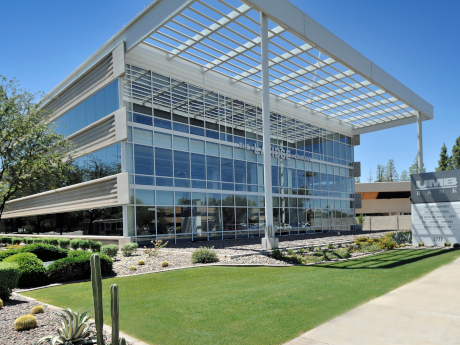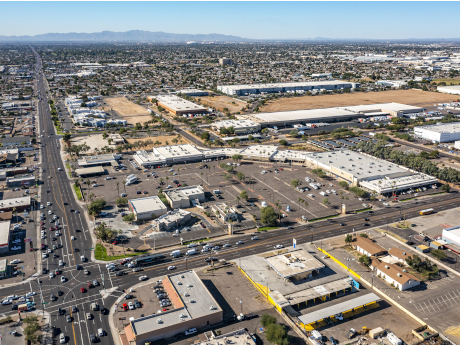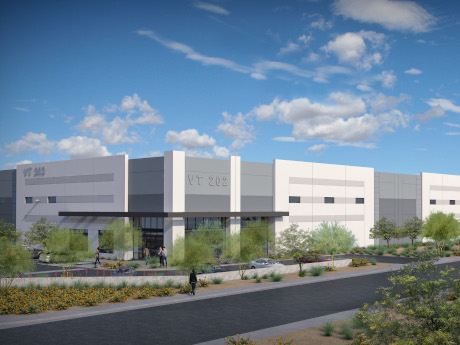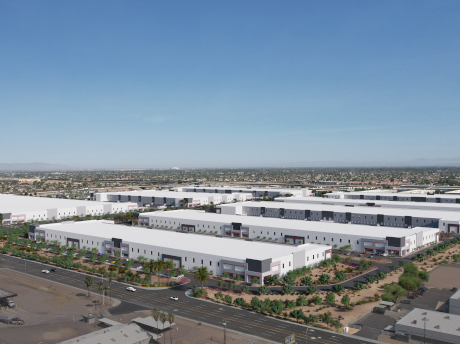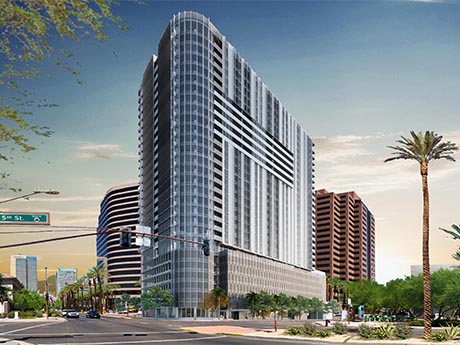— Kyle Davis, Sales & Leasing Agent, Commercial Properties Inc., a CORFAC International Firm — A market cooldown is likely in 2023 as interest rates rise and the investor pool becomes more cautious to some degree. I believe many investors recall lessons from the Great Recession and are not as significantly overleveraged, which means the effects of this market correction may not be nearly as drastic. Phoenix’s retail market also has some bright spots. The area’s retail net absorption was positive at more than 1.5 million square feet, with vacancy rates down to 5.1 percent at the end of the fourth quarter of 2022. This is compared to the 1,071,783 square feet of absorption and 6.6 percent vacancy rate a year ago. Many look at factors like unemployment, interest rates, housing starts, etc., to speculate about the coming market. What will impact our industry most directly, however, is how the lending market reacts to these indicators. As with 2008 and 2020, creditors may look at the same data points as investors and lower their risk profiles significantly faster than investors are able to counteract. There will be many commercial property loans set for refinancing in the near or upcoming future, as commercial property …
Market Reports
— By John Kobierowski, President and CEO, ABI Multifamily — As we enter a New Year, investors are looking for multifamily markets that will continue to offer consistent returns and stability. Thankfully, Phoenix is still regarded as one of the darlings of the multifamily markets. Investors from both coasts are talking to us about the Phoenix market again after not having invested here in a while — or, in some cases, ever. They say they’re realizing Phoenix just might be one of the few markets with predictable multifamily growth. Companies locating in Phoenix are creating tremendous job growth. For example, Taiwan Semiconductor recently announced an investment increase in the manufacturing plant it’s currently building in Phoenix — from $12 billion to $40 billion. That might be one of the largest single investments in the U.S. We’re eagerly anticipating the Southwest winter and spring events that draw the envious attention of a national audience, including WM Phoenix Open golf tournament, Super Bowl, Barrett Jackson collector car auction and Cactus League Spring Training. Our bright, sunny skies, green grass, and smiling people in t-shirts and flip flops will stand in stark contrast to those stuck in freezing cold winter temperatures and paying expensive home heating costs. …
By Phil Breidenbach, Senior Executive Vice President, Colliers Class A landlords are answering the call from tenants for captivating workplaces. These re-imagined environments are drawing businesses to buildings and invigorating absorption in the market. Greater Phoenix office vacancy fell to 13.5 percent at mid-year, which was a 0.6 percent drop from last quarter and 0.7 percent lower than mid-year 2021. This number also sits 1.6 percent below the national average. While 287,000 square feet of new product was delivered, more than 587,000 square feet was absorbed. This is evidence the workforce is finding its way back to the office, if not full-time at least a few days a week. The refreshing surge in absorption is driven by companies coming to the best and newest buildings — redefining Class A with amenities that compel the workforce back into the office. New buildings like 100 Mill and Cavasson are two great examples. The first, 100 Mill, was completed in the second quarter and is more than 90 percent preleased. The building will feature next-level common areas and best-in-class meeting and lounge areas. The flight to quality trend has evolved into a flight to experience trend. Companies are finally coming to grips with the reality that how they …
By Dave Cheatham, President, Velocity Retail Group For decades, Arizona’s housing and commercial real estate industry have benefitted and fed the state’s robust gains as population grew. Even during the pandemic, Phoenix welcomed more than 140,000 new residents fleeing more expensive, crowded coastal cities for what many deemed an improved quality of life. As we know, retail follows housing. Phoenix’s housing market has restarted, and these new markets will need retail to serve them. It has taken 15 years for retail vacancy rates to return to pre-recession levels in Phoenix. In the second quarter of 2022, the direct vacancy rate for retail properties declined to 6.7 percent. West Phoenix, Northwest Phoenix and Scottsdale are currently the strongest submarkets, drawing residents to fast growing cities and towns. I see retail expanding as residential development at the edges of the city continue, and agricultural land is transformed into subdivisions. With inflation shrinking household budgets, consumers are making intentional choices on where they drive and what they buy. Those retailers who are large-space occupiers will continue to focus on delivering value and lower prices to their customers. Shopping center development has been anemic in Phoenix in the past decade, as those that lease big …
By Kimberly A. Rollins, Senior Vice President, Rollins & Randall Multi-Family Group, Commercial Properties Inc. The big question on everyone’s mind is where Phoenix’s multifamily market is going. After several years of pandemic-caused uncertainty, the implications are still transforming the market. Whether it is workforce mobility, supply chain issues, or labor shortages, uncertainty and inflation have affected all areas of real estate — no place more so than here in the Phoenix Metro Area. The perfect storm of historically low interest rates, job opportunities, limited new development and a low cost of living have given rise to the housing shortage that has played out in the Valley over the past several years. We saw multifamily effective rent increase 22.7 percent year over year in the third quarter of 2021, and an average market sale price per unit of $297,697, with a 3.9 percent year-to-date cap rate, according to CoStar. Over the past 10 years, vacancy rates have dropped every year. They fell from 8.3 percent in 2012 to a low of 5.8 percent in 2021. Conversely, year to date we are seeing a vacancy increase for the first time during that timeframe, to 7.7 percent. Last year also saw the highest level of …
By Bill Honsaker, Managing Director, JLL Metro Phoenix recorded more than 7 million square feet of industrial absorption during the second quarter of 2022, setting a quarterly record for the market. The average size of local industrial deals has also ballooned, increasing 25 percent year over year to a new high of 91,095 square feet. The Southwest submarket remains the Valley’s industrial powerhouse, accounting for 68 percent of total leasing volume this past quarter. But as demand for big space continues to swell, so does the pressure on inventory. That leaves the market divided into two groups: those already in the market with land or buildings in their possession, and those who missed the land rush and must now buy out someone else’s position. In fact, across the Valley’s industrial core (roughly bounded by the Loop 303 to the west, Phoenix Gateway Airport to the east, Deer Valley to the north and the lower 202 to the south), would-be investors, developers and tenants are beginning to ask, “Where do we go next?” This dynamic has become a boon for further-out markets to Phoenix’s east and west, as well as to the south — particularly Central Arizona. With projects like Inland Port Arizona, Pinal …
Job Gains, Visitors Returning Jolt Retail Consumption in Phoenix, While Growth Projections Buoy Investor Sentiment
by Jeff Shaw
By Ryan Sarbinoff, First Vice President, Regional Manager, Marcus & Millichap Retail metrics in the Valley have soundly improved after enduring some turbulence during the health crisis. Through the first nine months of 2021, net absorption totaled roughly 1.6 million square feet, putting the market on a trajectory to record its highest annual count since 2017. More than half of that absorption was logged between July and September, indicating that momentum is building. Phoenix retail market is in a much stronger position heading into 2022 Several factors are driving the uptick in retail space demand. Metro employment surpassed the pre- pandemic peak by August 2021, spearheading consumers’ ability to spend. At the same time, more seasonal residents are returning to the Valley after many chose not to travel in 2020, while tourism is also progressing. According to the City of Phoenix Aviation Department, passenger counts at local airports increased by 67 percent year-to-date through September relative to the same period last year. All these underlying forces benefit retail spending, and ultimately fuel tenant demand. Longer-term outlook is robust, piloted by growth trends Phoenix is expanding at a swift pace, with the metro’s favorable climate, quality of life and job availability attracting new residents. From the beginning of …
By Pat Harlan, Managing Director, JLL Labor, geography, population growth and a steady stream of cost-effective, “speed to market” solutions make Phoenix one of the most dynamic industrial markets in the country. Based on existing fundamentals, 2022 is on track to be another record year. As of third-quarter 2021, Phoenix had landed just under 16 million square feet of net leasing year-to-date. Absorption had improved by more than 28.5 percent in the same 12-month period, to total 8.5 million square feet. Nearly 94 percent of that activity was generated from ecommerce and food and beverage users. Vacancy had also dipped to pre-pandemic levels, falling by 100 basis points year-over-year to just 6.8 percent as of the end of the third quarter of 2021. Construction continues to ramp up, trying to meet a seemingly unending stream of demand. As of the end of the third quarter, there was 16.6 million square feet of metro Phoenix industrial space under development. The West Valley accounts for about 11.3 million square feet of this activity. The Southeast Valley represents an additional 3.4 million square feet. Two of the largest buildings underway in the market right now are the Cubes Glendale, totaling 1.2 million square feet, and Building …
By Phil Breidenbach, Senior Executive Vice President, Colliers Companies are coming back to the office in Phoenix. Businesses are envisioning the return of their workforce as many look for new space or reconfigure their existing facilities. Building owners feel the momentum. We have reason to be optimistic — the future of the office and how we use the workplace is exciting! Getting there, however, will be turbulent. Your patience may be tested. Colliers’ fourth-quarter office report shows vacancies stabilizing market wide, positive absorption occurring in key submarkets and rents increasing marginally. Positive fourth-quarter absorption was led by leasing in new Class A+ buildings like 100 S. Mill. This Hines/Cousins project is 80 percent leased by institutional, “household name” tenants at record rents several months prior to completion. Vacancy rates may, however, continue to fluctuate as certain downsizing continues. Some institutional users are adopting work from home for much of their workforce, convinced this strategy will help with employee retention and cost reduction without impacting productivity — assumptions yet to be proven. This strategy has corporate America subleasing space, allowing leases to expire and vacating spaces, which is stagnating recovery. ‘Short Term’ — The Renewal Mantra for 2022 We speak with office occupiers regularly about back-to-work strategies. …
By Matt Pesch, Vice Chairman, CBRE The multifamily market in Phoenix experienced a record-setting year in 2021. Market vacancy dropped below 3 percent for the first time, the region led all U.S. metros in year-over-year rent growth for every quarter and total multifamily investment sales volume topped $12 billion. This was nearly double the volume from 2019 and a 125 percent jump from 2020. These metrics are driven by Phoenix’s primary economic drivers of nation-leading population and job growth. As of October, Phoenix was one of only four U.S. metros to recover 100 percent of the jobs the region lost during the pandemic. This was driven by the stable recovery of long-established industries and growing sectors that are diversifying the region’s employment base. Case in point: Phoenix is home to one of the fastest-growing biotech sectors in the U.S. with the life sciences workforce expanding by 8.5 percent from 2019 to 2020, according to CBRE’s latest research. Likewise, large corporate office users continue to relocate or expand in Phoenix at an unprecedented rate, further driving the region’s robust employment recovery. The area’s strong employment recovery and population growth are the fuel driving Phoenix’s multifamily sector. The gains in the apartment …


